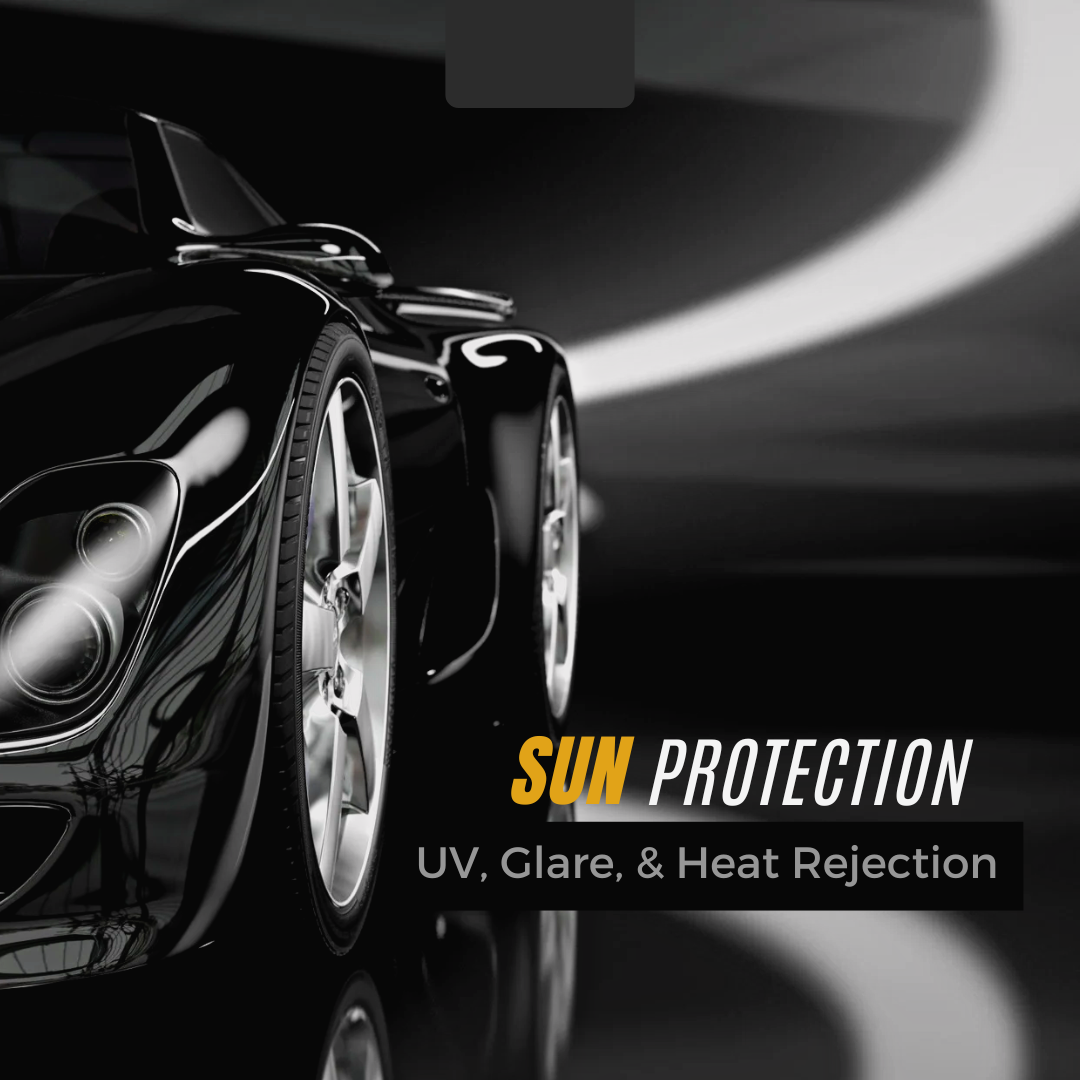Thinking about getting window tint for your car or home? You've likely come across two main options: nano ceramic window film and conventional window film. While both offer some level of protection, understanding their key differences can help you choose the best fit for your needs.
Material Matters:
- Nano Ceramic: This advanced technology utilizes microscopic ceramic nanoparticles embedded within the film. These offer superior performance compared to traditional materials.
- Conventional: Typically made from polyester with an adhesive layer, this type of film may contain dyes, metals, or carbon for various effects.
Beating the Heat:
- Nano Ceramic: The star here is heat rejection. The ceramic nanoparticles excel at blocking infrared (IR) rays, the main culprit for heat transmission. This translates to significantly cooler interiors and superior UV protection compared to conventional films.
- Conventional: While some heat rejection is possible, its effectiveness varies depending on the film's type and quality. Generally, conventional films offer moderate heat reduction.
Clarity is Key:
- Conventional: Some conventional films might have a slight haze, compromising your view. Additionally, they may discolor or develop bubbles over time.
- Nano Ceramic: Optically clear, these films maintain a high-definition view without interfering with visibility. They are also less prone to discoloration or bubbling, ensuring a long-lasting, aesthetically pleasing look.
In Conclusion:
When comparing car window tinting options, nano ceramic window tint stands out as the premium choice. While traditional window tint relies on basic dye or metallic technologies, ceramic car tint harnesses advanced nano-particle technology for exceptional performance. The superior heat rejection of ceramic window tint keeps your vehicle significantly cooler, blocking up to 95% of infrared heat - far more than conventional window tint options.
Clarity is another major advantage of ceramic car window tinting. Unlike traditional window tint that can appear purple or reflective over time, nano ceramic tint maintains its crystal-clear appearance for years. This means your car tint won't interfere with visibility, even at night, while still providing maximum privacy and style.
Durability sets ceramic window tint apart from standard options. The advanced nano ceramic particles resist fading, bubbling, and peeling, ensuring your car window tinting investment lasts longer. While conventional window tint might need replacement after a few years, quality ceramic car tint can maintain its performance for the vehicle's lifetime.
The enhanced features of ceramic window tint do come with a higher price tag - often 30-50% more than conventional car tint. However, many vehicle owners find the investment worthwhile when considering the long-term benefits: superior heat protection, better clarity, longer lifespan, and zero electronic interference with GPS, cell phones, or radio signals.
Your choice between ceramic and conventional window tint should align with your specific needs and budget. If maximum heat protection, clarity, and longevity are priorities for your car window tinting, ceramic film offers unmatched performance. However, if you're working with a tighter budget and moderate heat reduction meets your needs, traditional window tint remains a practical choice for basic UV protection and privacy.
Nano ceramic window film offers superior heat rejection, clarity, and durability compared to conventional window film. However, this advanced technology comes at a higher cost. Consider your priorities: if top-notch heat protection and a long-lasting, clear view are crucial, nano ceramic film is the way to go. If budget is a primary concern and moderate heat reduction is sufficient, conventional film might be a suitable option.

